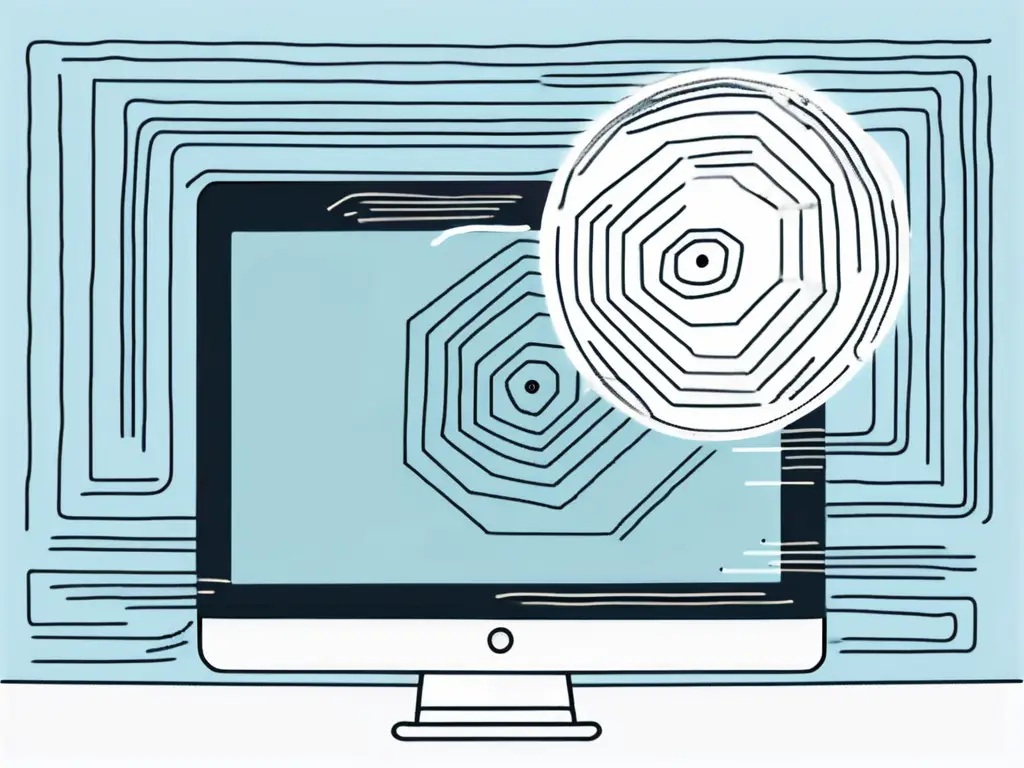In today’s interconnected digital world, where our lives revolve around the internet, cybersecurity has become paramount. One of the threats that internet users and businesses face is clickjacking. But what exactly is clickjacking? In this comprehensive guide, we will explore the ins and outs of clickjacking, its technical aspects, its impact on internet users, and how to protect yourself from falling victim. So, brace yourself for an enlightening journey into clickjacking cybersecurity.
Understanding the Basics of Clickjacking
Defining Clickjacking in Cybersecurity
Let’s start by unraveling the mystery behind clickjacking. Put simply, clickjacking is a technique cybercriminals use to deceive users into clicking on hidden or transparent elements on a webpage without their knowledge. These elements can range from innocent-looking buttons to enticing ads, but they serve malicious purposes behind the scenes. By leading users to click on them, clickjacking can cause unintended actions, including transferring funds, sharing sensitive information, or even installing malware.

One of the most concerning aspects of clickjacking is its ability to exploit users’ trust in familiar interfaces. By overlaying deceptive elements on top of legitimate content, cybercriminals can trick users into interacting with content they did not intend to engage with, leading to potentially devastating consequences.
The Evolution of Clickjacking
Clickjacking has evolved over time, adapting to advancements in web technologies and becoming more sophisticated. What once was a simple tactic has become a significant concern for internet security. As cybersecurity measures become more robust, so do the techniques employed by clickjacking perpetrators. From simple overlays to invisible frames, clickjacking has proven to be a persistent and adaptable threat.
The rise of social engineering tactics has added another layer of complexity to clickjacking schemes. By combining psychological manipulation with deceptive web design, cybercriminals can create highly convincing clickjacking scenarios that even savvy users may fall victim to. This intersection of technology and human behavior underscores the importance of ongoing vigilance and education in the fight against clickjacking.
The Technical Aspects of Clickjacking
Clickjacking, a deceptive technique with serious implications, operates at the intersection of HTML and CSS layering capabilities. This sophisticated method preys on unsuspecting users by superimposing invisible layers on legitimate web pages or manipulating the layout of elements within a webpage. Through these tactics, clickjacking dupes users into interacting with content they did not intend to engage with, leading to unintended consequences ranging from minor annoyances to grave security breaches.
How Clickjacking Works
To fully grasp the intricacies of clickjacking, it is essential to explore its modus operandi. By exploiting the inherent layering functionalities of HTML and CSS, clickjacking creates a façade of legitimacy while concealing malicious intent beneath the surface. This surreptitious approach capitalizes on users’ trust in the visual integrity of web content, luring them into unwittingly triggering actions that serve the malevolent purposes of the attacker. The insidious nature of clickjacking lies in its ability to blur the lines between authentic user interactions and covert manipulations, making it a formidable threat in cybersecurity.
Common Clickjacking Techniques
Clickjacking is rife with various deceptive techniques, each designed to exploit different facets of user behavior and technological vulnerabilities. Among the prevalent strategies employed by malicious actors is UI redress. This tactic involves manipulating visual elements to deceive users into clicking on hidden components and likejacking. This scheme capitalizes on the widespread use of social media platforms to propagate fraudulent engagements. Furthermore, clickjacking perpetrators often leverage iframes to overlay targeted websites discreetly, camouflaging their nefarious activities within the confines of legitimate web pages. To stay ahead of detection mechanisms, some sophisticated clickjacking campaigns even incorporate AI-generated content to obfuscate their malicious intents, posing a formidable challenge to cybersecurity experts and users alike.
The Impact of Clickjacking on Internet Users
Risks Associated with Clickjacking
The risks associated with clickjacking cannot be overlooked. From compromising personal information and financial accounts to unknowingly participating in illegal activities, clickjacking can have severe consequences for unsuspecting internet users. The potential for reputational damage and financial loss is high, making it essential to understand the risks and take preventive measures.
One of the lesser-known risks of clickjacking is the potential for malware to be installed on a user’s device. By tricking users into clicking on hidden buttons or links, malicious actors can exploit vulnerabilities in browsers or operating systems to plant harmful software. This malware can range from adware that bombards users with unwanted advertisements to more sinister forms like ransomware that encrypts a user’s files until a ransom is paid.
The Consequences of Successful Clickjacking Attacks
So, what happens when a clickjacking attack succeeds? The consequences can be dire. For businesses, successful clickjacking attacks can result in data breaches, compliance violations, and loss of customer trust. For individual users, it can lead to identity theft, financial ruin, and emotional distress. It should not be taken lightly, so vigilance and proactive defense are vital.
In addition to the immediate financial and reputational damage caused by successful clickjacking attacks, there can also be long-term consequences. Once a user’s personal information has been compromised, it can be sold on the dark web, leading to a perpetual risk of identity theft and fraud. Moreover, suppose a business falls victim to a clickjacking attack. The legal ramifications can be extensive in that case, with potential lawsuits from affected customers and regulatory fines for failing to protect sensitive data.
Protecting Yourself from Clickjacking
Best Practices for Internet Users
In the battle against clickjacking, knowledge is power. By following best practices, internet users can significantly reduce their risk of falling victim. Simple steps, such as keeping software and browsers updated, using strong and unique passwords, and exercising caution when clicking on unfamiliar links, can go a long way in protecting themselves from clickjacking attempts.

Be wary of suspicious pop-ups and advertisements, as they can often be vehicles for clickjacking schemes. Avoid interacting with dubious content that prompts you to click on it unexpectedly. Educating yourself and staying vigilant are crucial components of a robust defense strategy against clickjacking.
Advanced Security Measures Against Clickjacking
Advanced security measures are available for those looking to fortify their defenses further. These include using browser extensions that detect and block clickjacking attempts, implementing content security policies, and employing web application firewalls. Combining multiple layers of defense can enhance your resistance to clickjacking attacks.
Additionally, regularly auditing your website for potential vulnerabilities can help identify and address any weaknesses that clickjacking techniques could exploit. Conducting thorough security assessments and penetration testing can provide valuable insights into areas that require strengthening to mitigate the risk of clickjacking.
The Role of Businesses in Preventing Clickjacking
Implementing Clickjacking Defense in Business Operations
Businesses are critical to protecting themselves and their customers from the pervasive threat of clickjacking. Clickjacking, also known as UI redress attack, is a malicious technique used by cybercriminals to trick users into clicking on something different from what they perceive, potentially leading to unauthorized actions or data theft. The ramifications of falling victim to clickjacking can be severe, ranging from financial losses to tarnished reputations. Therefore, investing in robust clickjacking defense mechanisms should be a top priority for all businesses operating in the digital landscape.
One fundamental strategy in combating clickjacking is the proactive implementation of stringent security measures. This includes conducting regular audits of websites to identify and patch vulnerabilities that malicious actors could exploit. Furthermore, businesses should prioritize adopting secure coding practices to fortify their digital assets against clickjacking attacks. Leveraging real-time monitoring solutions can also provide protection, enabling swift detection and response to suspicious activities that may indicate a clickjacking attempt.
Educating Employees about Clickjacking
Aside from technological defenses, employee education is a cornerstone in fortifying a business’s resilience against clickjacking threats. By fostering a culture of cybersecurity awareness within the organization, companies can empower their workforce to recognize and mitigate potential risks effectively. Educating employees about the various forms of clickjacking, such as cursor tracking and likejacking, equips them with the knowledge needed to promptly identify and report suspicious activities.
Instilling safe browsing practices and conducting routine security training sessions are essential to a comprehensive clickjacking prevention strategy. By arming employees with the necessary skills and knowledge to navigate the digital landscape securely, businesses can cultivate a vigilant and proactive security posture that is a formidable defense against clickjacking and other cybersecurity threats.
The Future of Clickjacking
Emerging Trends in Clickjacking
As technology continues to evolve, clickjacking techniques will too. Cybercriminals are always looking for new ways to exploit vulnerabilities and evade detection. Emerging trends include leveraging artificial intelligence and machine learning to create more sophisticated and convincing clickjacking attempts. Staying current with these trends will be crucial in developing effective countermeasures.

One emerging trend in clickjacking is using deep learning algorithms to analyze user behavior and create highly targeted clickjacking attacks. By studying patterns in user interactions, cybercriminals can craft deceptive clickjacking schemes tailored to specific individuals, making them even harder to detect. This level of personalization poses a significant challenge for cybersecurity professionals, requiring them to adapt and refine their defense strategies constantly.
Predictions for Clickjacking in the Cybersecurity Landscape
The fight against clickjacking is ongoing, and looking towards the future is essential. While we can expect advancements in clickjacking techniques, we can also anticipate the development of stronger defensive measures. Collaboration between cybersecurity experts, businesses, and internet users will be key in staying one step ahead of clickjacking perpetrators.
Another prediction for the future of clickjacking is the increased use of biometric authentication as a defense mechanism. By incorporating biometric data such as fingerprints or facial recognition into the authentication process, users can add an extra layer of security that is difficult for cybercriminals to bypass. As clickjacking techniques become more sophisticated, integrating biometric authentication may become a standard practice to protect sensitive information.
Conclusion
Clickjacking poses a significant threat to internet users and businesses. Understanding the basics of clickjacking, its technical aspects, and the measures to protect yourself and your business is essential in the digital age. By staying informed, vigilant, and proactive, we can confidently navigate the cybersecurity landscape and ensure a safer online experience for all.
As you’ve learned from this guide, clickjacking is a formidable threat in our digital age, but it’s not insurmountable with the right expertise. Blue Goat Cyber, a Veteran-Owned leader in cybersecurity, offers specialized B2B services to combat such threats. Our team’s proficiency in medical device cybersecurity, penetration testing, and compliance with HIPAA and FDA standards ensures that your business is protected and positioned to excel in the digital landscape. Don’t let cyber threats undermine your success. Contact us today for cybersecurity help and partner with Blue Goat Cyber to turn potential vulnerabilities into fortified strengths.
